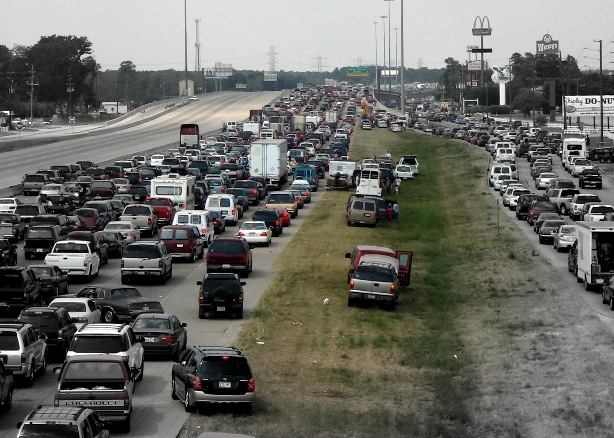
A reliable vehicle is a very important part of our preparedness planning. Not only is it transportation out of a bad situation, but your vehicle can provide lighting, heat/air conditioning, electrical power, and shelter. Most of us don’t have the luxury of procuring a dedicated bug out vehicle; we have to make the best of what we have. The good news is that you can add important capabilities to your existing vehicle without breaking the bank, and at your own pace.
Road Clearance
One thing that will quickly defeat your bugout plan is a tree or vehicle blocking the road. In an ideal world, you could hook up your vehicle’s winch ($1,000) and pull the obstacle out of the way, or use your chainsaw ($300-$1,000) to cut up the tree so you can pass. But winches are only practical on certain vehicles, and chainsaws require significant maintenance; both also come with hefty safety issues as well.
Fortunately low-tech, cheaper alternatives to the winch and chainsaw are available, but they both require using a bit of muscle, so consider your family’s fitness level if you go this route. A good winch substitute is a cable puller, sometimes called a “come-along.” It gives you a 35:1 mechanical advantage: you move the ratcheting handle and it pulls with about 3 tons of force for about $200. Another poor man’s winch is a tow strap or chain, a fixed length of flexible material ($25-$50) that can be hooked to your vehicle and the obstacle. Your vehicle can move the obstacle, if you have the room to work.
A forestry saw ($200-$225) can cut a freshly-fallen tree or branches without the expense and maintenance required of a chainsaw. These saws are like the hand saws we’ve all used, but up to 4 feet long with huge teeth. They stow flat in your trunk with little bulk.
Staying on the Road
Just about every disaster creates debris, part of which become sharp objects that pose a danger to your tires. A flat tire during your bugout can place you and your family in danger while you attempt to repair the problem, if you are even able. Multiple flats will take your vehicle completely out of action. The good news is that you may be able to upgrade your vehicle’s tires to the “run-flat” type.
The military has used run-flat tires on their High Mobility Multipurpose Wheeled Vehicle (HMMWV) or “Humvee” for many years. These special tires use several strategies to allow the tire to continue to support the vehicle’s weight even after the loss of air due to puncture or other damage. Cadillac and BMW widely make use of run-flat tires for their product lines, and several tire manufacturers including Goodyear, Firestone, and Continental offer run-flat tires as replacement tires which may fit your vehicle. The run-flat won’t eliminate the flat-tire problem, but it can give you up to 100 miles of additional driving to escape dangerous conditions. Run-flats will cost you an additional 10%-30% per tire.
But run-flats aren’t available for every vehicle. Alternatives include tires with Kevlar belts for enhanced puncture protection and flat-fixing kits with a chemical sealant and air compressor. At a minimum, a full-sized spare is a critical need. (continue reading)

